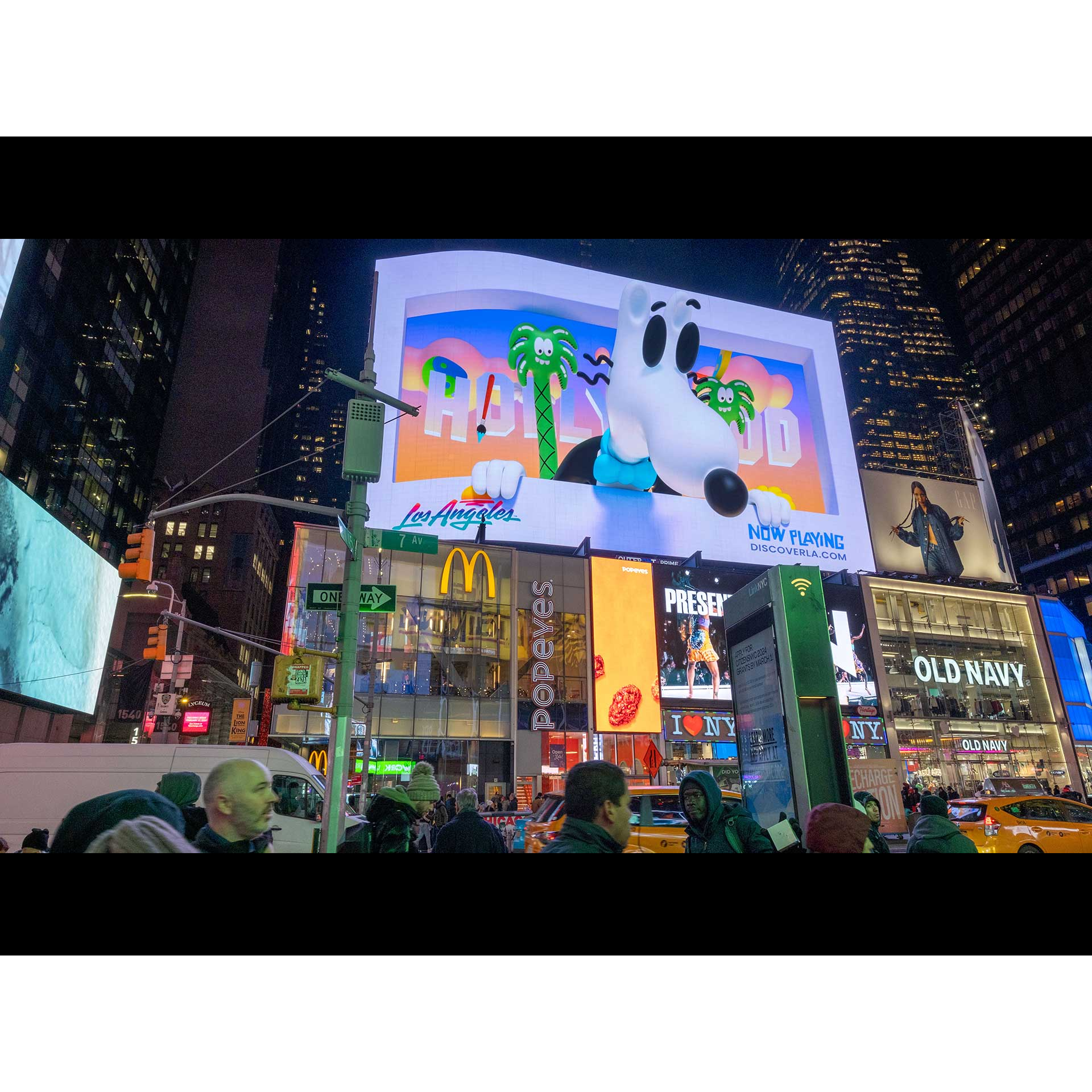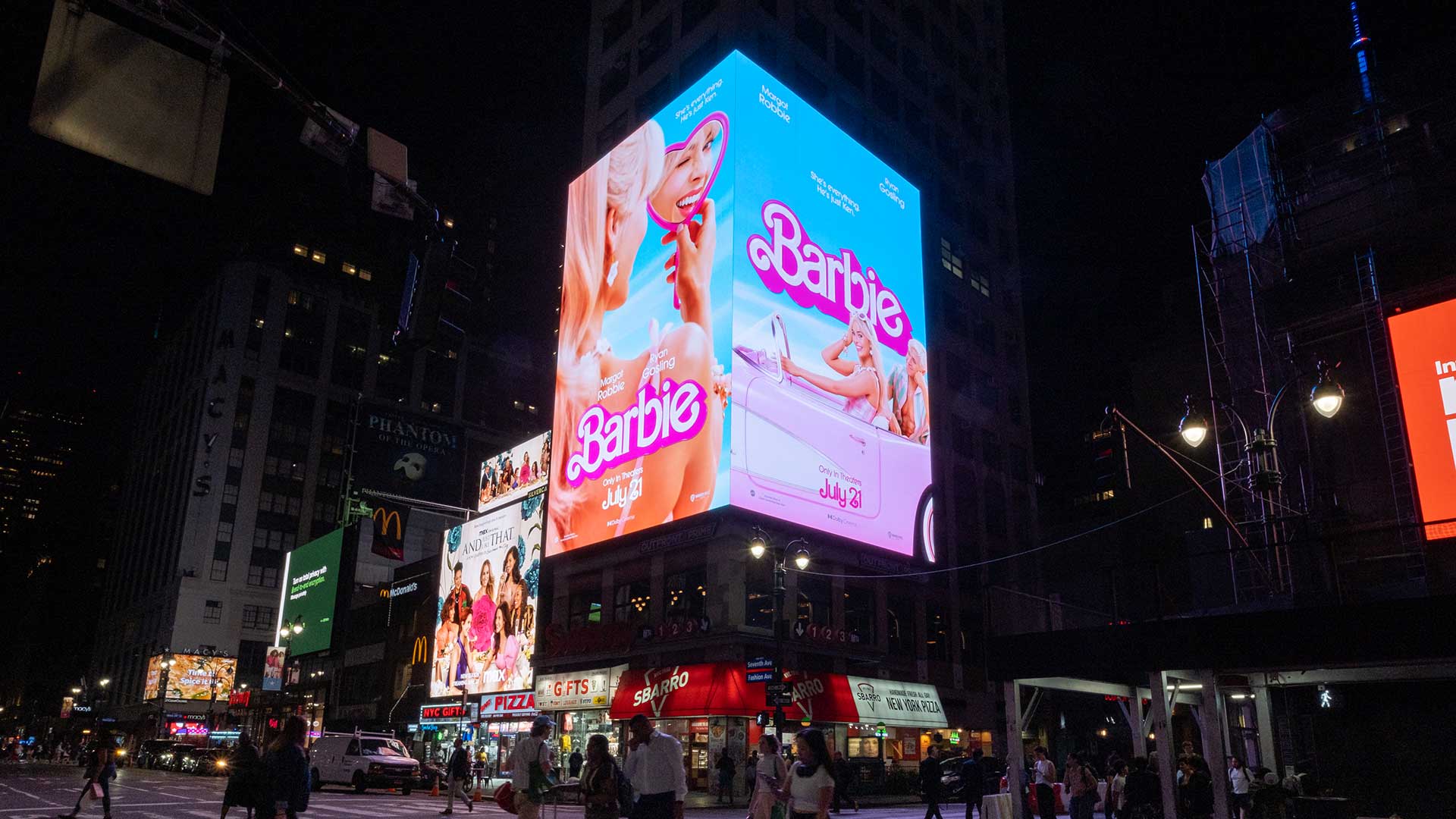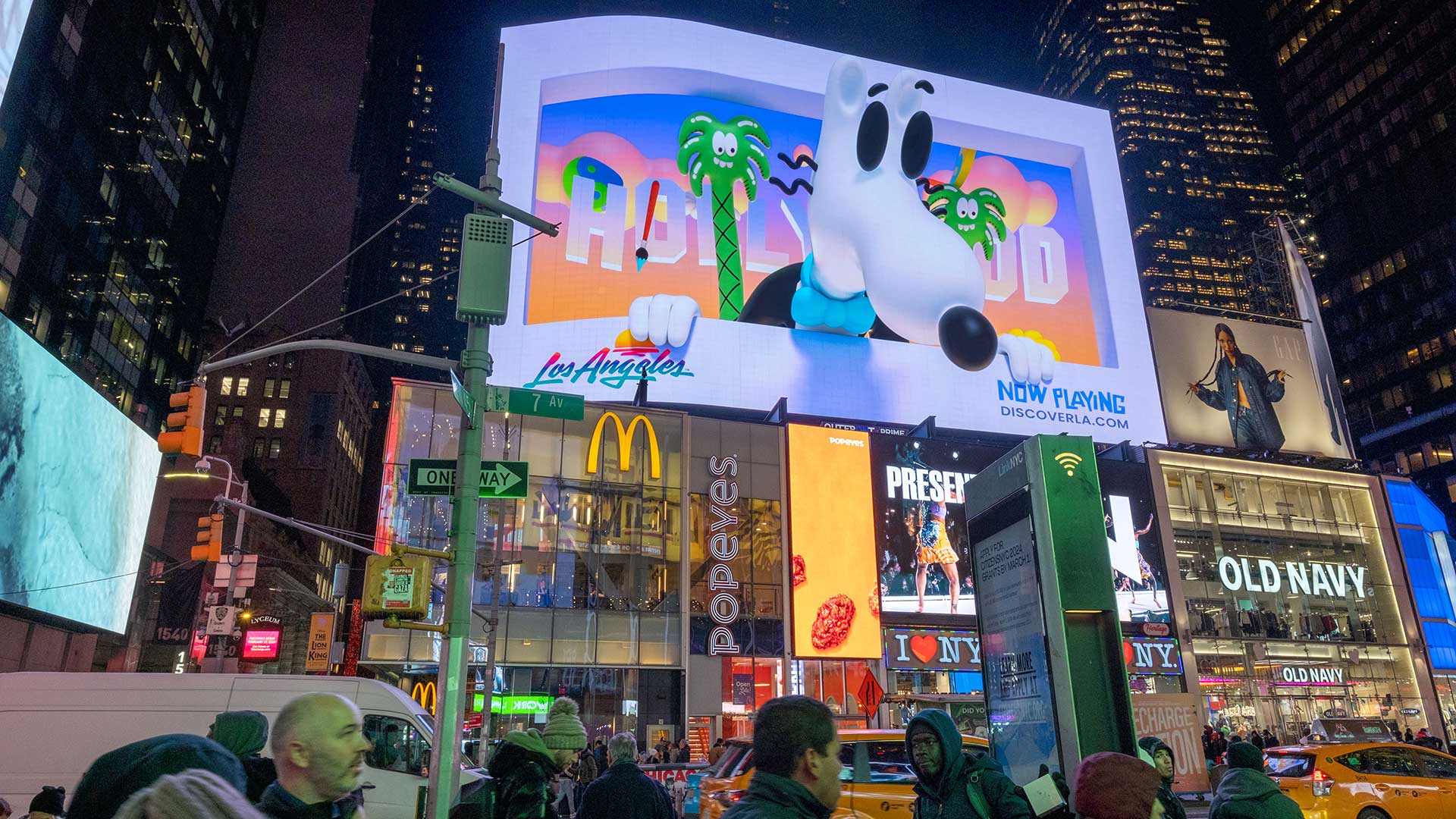Ten Advertising Trends Brands Need to Heed

What are the factors driving purchases for today’s cost-conscious consumer? How do advertisers address the challenges of a quickly shifting media landscape? And what makes out of home more essential than ever for brands that want to break through?
OUTFRONT’s Advertising Trends Report is back and fully updated for the second half of 2024, featuring over 40 pages of insights into consumers, media, and OOH. You can access the Mid 2024 Advertising Trends Report now for the full lowdown, or continue reading for the ten biggest trends identified in the report.
Top Consumer Trend: Adjusting for Inflation
At the top of most consumers’ minds? Rising household costs in core categories like CPG, housing, and energy. 94% are concerned about food costs, while 64% expect groceries to be more expensive next month (SOURCE: Pew Research).
One way three in ten consumers are responding is by trading down to less expensive alternatives, which creates an opportunity for value brands and retailers with their own in-house lines. Out of home advertising – especially in the form of retail media networks – can put those brands on the radar for budget-conscious consumers (SOURCE: Deloitte).
Top Consumer Trend: Prioritizing Experience
OUT is where it’s at! While Americans are tightening belts across the board, some categories are more resilient than others. More than half of consumers say they now prioritize spending on experiences over physical goods (SOURCE: Paysafe). Consequentially, travel, dining out, and live events are the categories where the trade-down-to-splurge ratio was the strongest.
And spending on experience we are. The average vacation cost last year rose to an all-time high of $2,830 (SOURCE: Allianz) and Live Nation had its biggest year ever, selling a billion dollars’ worth of Taylor Swift tickets alone and $23.3B overall (SOURCES: Live Nation, Pollstar).
Top Consumer Trend: Embracing Nostalgia

Everything old is new again, with a little film you may have heard of called Barbie ruling the box office for 2023. Who will reign supreme this year? Chances are it’s someone we already know. Here’s a statistic: since 2016, out of the top 60 box office performers, only five were original titles – the rest were sequels, prequels, and remakes (SOURCE: Yahoo Finance).
What can we say? Consumers know what we like, and we want more of it. The way nostalgia evokes happiness (53%) and comfort (40%) in consumers primes them to purchase – 52% say nostalgia makes such a purchase more likely (SOURCES: GWI, Civic Science).
Top Media Trend: The Enshittification of Online
Online advertising has become more unpleasant for consumers and less effective for brands. Intrusive, disruptive user experiences don’t prime people to buy – which is why 50% of marketers say digital ads don’t improve brand loyalty and 44% say they don’t even improve sales (SOURCE: Wunderkind). Maybe that lack of real impact is why digital ad fraud is expected to cost advertisers $71 billion this year (SOURCE: Lunio).
There’s a structural explanation for this decline, one that writer Cory Doctorow summed up in one word: enshittification. You may not have heard the term, but you’ve certainly experienced it. Think about how when you got on your favorite social network, your feed was full of your friends and family. Then it was less friend stuff, more brand content, but they were brands you followed. Gradually that organic content was replaced by paid advertising from those brands. Then it was ads from brands you don’t follow, and eventually ads for things you weren’t even interested in, decreasing your enjoyment of the platform. Over time you clicked on fewer of the ads and eventually engaged with the site less, which in turn advertisers weren’t thrilled with.
This race to the bottom seems to be an unfortunate natural progression, as we see it repeat over and over again: social networks first center users, then center advertisers at the expense of users, and finally they center themselves at the expense of both. Fortunately, this trend does not apply to out of home.
Top Media Trend: Linear TV Tune-Out
Cord cutting continues to blunt TV’s linear impact, as 56% of consumers now say streaming is their preferred means of watching (SOURCE: LG Ad Solutions). The decline is accompanied by rising costs. Linear upfront eCPMs rose by 12% while year-over-year television viewership declined 4% for broadcast and 10% for cable (SOURCES: Nielsen, Guideline Solutions).
Live sports are the last things that keep linear TV hanging on, although even there streaming has made inroads, as events like NFL games and WWE Raw migrate to platforms like Amazon Prime and Netflix.
As such, marketers are changing the channel too, television’s ranking dropping from third-most-preferred last year to 12th for 2024 (SOURCE: Nielsen).
Top Media Trend: Brand Activations

Few marketing tactics excite consumers quite like brand activations, and smart brands are taking full advantage. Bringing fans into the world of a brand, they’re more than just an excuse to get out into the public – they’re critical to business success for 90% of marketers (SOURCE: Anyroad).
Brand activations make a powerful impact, with 77% reporting increased trust after an activation and 72% retaining the positive perceptions the brand made at the activation for at least a month after (SOURCE: Freeman). The end result is triple the word of mouth compared to brands that don’t activate (SOURCE: G2).
And by definition, brand activations can only happen out of home.
Top OOH Trend: DOOH Does It Better
Digital out of home is hot right now, and for good reason: it drives action. At 49%, its overall likelihood of driving action is higher than TV/streaming, social media, online/web, radio/podcast, and print advertising.
And that impact can be felt on and off consumers’ mobile devices. Digital out of home drives online searches (44%), website visits (38%), and social media visits (30%) as its top digital activations. Outside what we do on the doomscroll machine, DOOH is driving us to watch TV shows (38%), visit restaurants (36%), and make in-store purchases.
Digital transit is even more impactful, driving 85% of viewers to action. 65% notice digital transit ads en route to in-store purchases; 43% say that transit ads impact those purchases (SOURCE: The Harris Poll).
Bottom line? It doesn’t matter what type of action you’re trying to drive: digital out of home inspires it.
Top OOH Trend: Full Funnel Impact
It can be easy to fall into the trap of thinking of out of home as a medium that only builds brand awareness – after all, it is really good at that. But the fact is that out of home makes an impact all the way down the conversion funnel.
Out of home can influence the entire buyer’s journey. More than two in three campaigns resulted in lifted awareness, consideration, intent, or foot traffic (SOURCE: Vistar Media).
That impact doesn’t stop at the point of purchase either. 38% of marketing executives said that billboards influence existing customers, 28% said they increase retention, and 27% said they increase loyalty (SOURCE: Journal of Advertising Research).
Top OOH Trend: Viral 3D Billboards

You’ve likely seen dimensional OOH creative (aka 3D billboards) on your social media feed but you might not realize how impactful they are. Consumers, are overwhelmingly interested in the ads (72%) (SOURCE: The Harris Poll), likely to record them (55%), and likely to share via social media (58%). Even better, 68% view brands using the technology as more premium, and 66% are more likely to buy the product advertised (SOURCE: MFour).
Something else you might not know: 3D creative is no longer limited to billboards. Our XScape dimensional creative advanced capability, allows advertisers to execute 3D in large-format anamorphic or small-format spatial including transit media like Liveboards and Video Urban Panels.
Top OOH Trend: Retail Media Networks
For CPG brands, retail media networks are the single most important element of their media plans (SOURCE: Skai). The literal last mile of the customer journey is a powerful place to be, with RMNs promising outcomes like better customer understanding, stronger retailer relationships, better shopping experience, and most importantly, that presence as close as possible to the point of purchase.
And while in-store media may be the last RMN ad consumers see before buying, 60% of RMN advertisers also include offsite OOH assets in their plans (SOURCE: Skai)
Those are the top consumer, media, and OOH trends for advertisers to keep in mind as we come down the homestretch of the year. Want more insights? Our full Mid 2024 Advertising Trends Report is over 40 pages long and it’s free.
Posted at MediaVillage through the Thought Leadership self-publishing platform.
Click the social buttons to share this story with colleagues and friends.
The opinions expressed here are the author's views and do not necessarily represent the views of MediaVillage.org/MyersBizNet.


